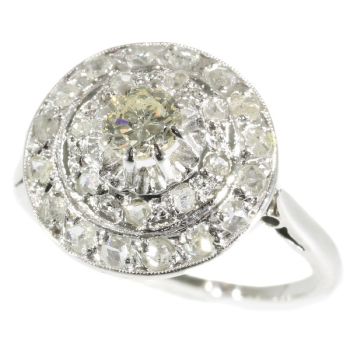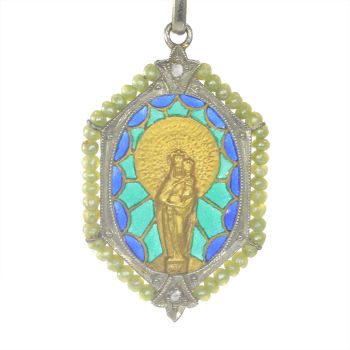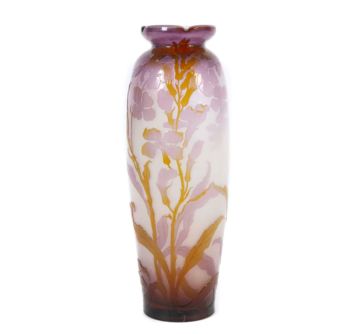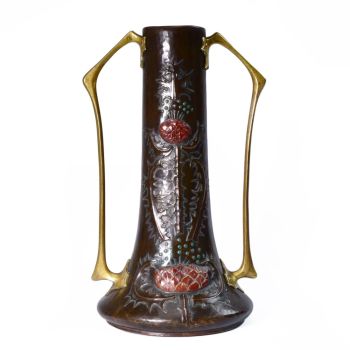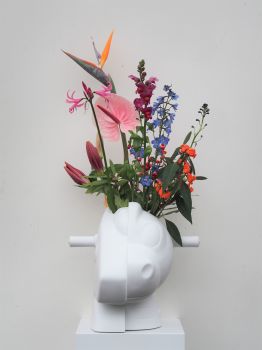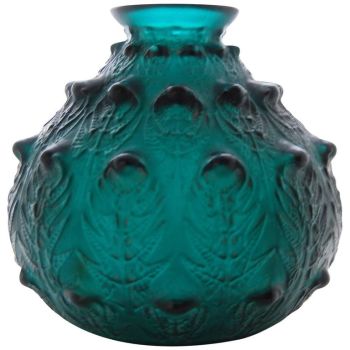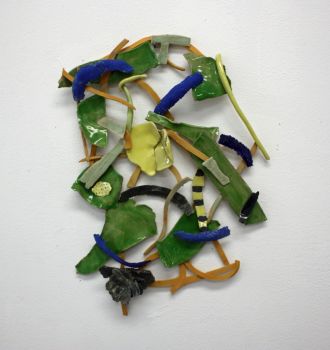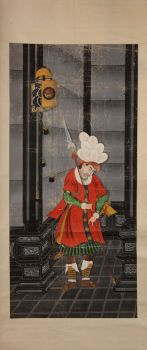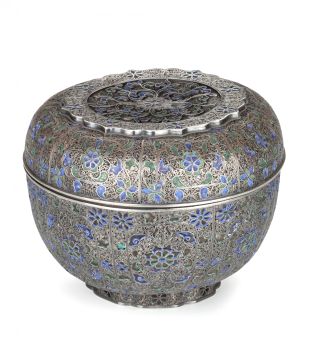A rare set of twelve Chinese export porcelain plates bearing the arms of Jan Albert Sichterman (1692 1730 - 1764
Artista Sconosciuto
Porcellana
ø 23 cm
Prezzo su richiesta
Zebregs & Röell - Fine Art - Antiques
- A proposito di opere d'arteA rare set of twelve Chinese export porcelain plates bearing the arms of Jan Albert Sichterman (1692-1764)
Qianlong period, circa 1730-1735
Each decorated in iron red, gold, brown, green, purple and blue, with in the center and upper rim, the Sichterman coat-of-arms of a red squirrel on a gold ground, nibbling at a green leaf, on an oval shield with a coronet on top.
Diam. 23 cm (each)
Jan Albert Sichterman (Groningen 1692 - 1764) commissioned this, and seven other dinner services, coffee and tea services and numerous other pieces of Chinese porcelain with his coat-of-arms. At 24, after a duel in which he wounded his opponent, Jan Albert had to flee the Netherlands. In 1716 he arrived in Batavia (Jakarta), and a year later, he was sent to Hooghly, the Dutch factory in Bengal. Here he made a splendid career, perhaps because in 1721 he married Sibylla Volkera Sadelijn (1699-1781), daughter of Jacob Sadelijn, Director of Bengal from 1727 till 1734. Jan Albert succeeded his father-in-law as Director of Bengal in 1734 till 1744, when he returned to Holland as commander and admiral of the return fleet, taking a large part of his armorial porcelain collection with him. Many pieces had already been sent to the Netherlands in advance.
In Bengal, Jan Albert was active in the cotton and silk trade for the VOC and also in very lucrative private trade and smuggling, which made him a fortune. After his death in 1764, his huge collection of porcelain, Japanese lacquer, exotica, oriental furniture, and numismatics, books, and 481 Dutch master paintings, including Rembrandt, Frans Hals, Jan Steen, Rubens and many other masters. The sale included about 750 lots of porcelain, in total over 4000 pieces, while he had given his three surviving children already a fair share of his porcelain collection. It is no wonder that Sichterman, who could design his own coat-of-arms as a nouveau riche, chose the ever-acorn-collecting squirrel to adorn his shield. - A proposito di opere artista
Può succedere che un artista o un creatore sia sconosciuto.
Alcune opere non sono determinate da chi sono state realizzate o sono state realizzate da (un gruppo di) artigiani. Esempi sono statue dell'antichità, mobili, specchi o firme non chiare o leggibili ma anche alcune opere non sono affatto firmate.
Inoltre puoi trovare la seguente descrizione:
•"Attribuito a …." A loro avviso probabilmente opera dell'artista, almeno in parte
•“Studio di ….” o “Officina di” A loro avviso un'opera eseguita nello studio o nella bottega dell'artista, eventualmente sotto la sua supervisione
•“Cerchio di…” A loro avviso un'opera del periodo dell'artista che mostra la sua influenza, strettamente legata all'artista ma non necessariamente al suo allievo
•"Stile di..." o "Seguace di..." A loro avviso un'opera eseguita nello stile dell'artista ma non necessariamente da un allievo; può essere contemporaneo o quasi contemporaneo
•“Modalità di…” A loro avviso un'opera nello stile dell'artista ma di epoca successiva
•"Dopo …." A loro avviso una copia (di qualsiasi data) di un'opera dell'artista
•“Firmato…”, “Datato…” o “Iscritto” A loro avviso l'opera è stata firmata/datata/inscritta dall'artista. L'aggiunta di un punto interrogativo indica un elemento di dubbio
•"Con firma....", "Con data...", "Con iscrizione..." o “Riporta firma/data/iscrizione” a loro avviso la firma/data/iscrizione è stata aggiunta da qualcuno diverso dall'artista
Sei interessato ad acquistare questa opera d'arte?
Artwork details
Related artworks
Artista Sconosciuto
A superb Indonesian royal gem-set gold overlaid silver betel box19th century
Prezzo su richiestaZebregs & Röell - Fine Art - Antiques
1 - 4 / 12- 1 - 4 / 11
Amalric Walter
Amalric Walter & Henri Bergé – Crabe plumier1920 - 1929
Prezzo su richiestaAntiques Emporium
Artista Sconosciuto
Verre à boire Cristallo façon de Venise1600 - 1650
Prezzo su richiestaPeter Korf de Gidts - Antiquairs
René Lalique
Un rarissimo vaso "Fougeres" verde intenso disegnato da R. Lalique1912
€ 8.950Lennart Booij Fine Art and Rare Items
 A cura di
A cura diSilla Scheepens
Johann Loetz (Lötz) Witwe Klostermühle
Johann Loetz Witwe – Ausfuehrung 146 Titania vase – 19121910 - 1919
Prezzo su richiestaAntiques Emporium
Frères Daum
Daum Nancy – “Paysage Soleil Couchant” vase with two applied handles1900 - 1910
Prezzo su richiestaAntiques Emporium
1 - 4 / 24Samuel Dejong
Anatomia Blue Heritage, Atlas Closed2017 - 2019
Prezzo su richiestaVilla del Arte Galleries
Artista Sconosciuto
A Chinese porcelain blue and white 'Mantou Xin' bowl, Kangxi period (1661-1722)1700 - 1720
Prezzo su richiestaMenken Works of Art
Samuel Dejong
Anatomia Blue Heritage, Hercules Open2017 - 2019
Prezzo su richiestaVilla del Arte Galleries
 A cura di
A cura diGallerease Magazine
Artista Sconosciuto
A large Japanese Imari porcelain 'VOC Groningen' dish1800 - 1925
Prezzo su richiestaZebregs & Röell - Fine Art - Antiques
1 - 4 / 24Artista Sconosciuto
The bell of the VOC fortress in Jaffna, Sri Lanka1747
Prezzo su richiestaZebregs & Röell - Fine Art - Antiques
 A cura di
A cura diDanny Bree
Shiba Kokan
Dipinto di un olandese di fantasiaearly 19th
Prezzo su richiestaZebregs & Röell - Fine Art - Antiques
Artista Sconosciuto
A rare Japanese export lacquer medical instrument box1650 - 1700
Prezzo su richiestaZebregs & Röell - Fine Art - Antiques
1 - 4 / 12







